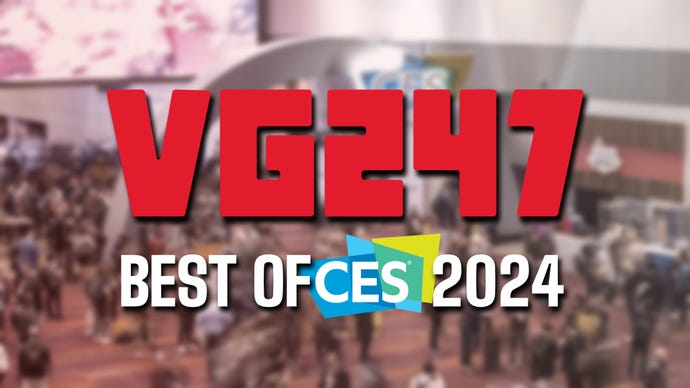The Best Stuff from CES 2024
As always, a new year kicks off with the technology industry descending on Las Vegas to showcase what's new for 2024. Here's some of the best stuff that was at the show.
Another CES is drawing to a close - and mercifully, it hasn’t been all about awful and short-sighted implementations of AI that make you want to blow your brains out. Okay, most of it has been about that - but there’s still been some fascinating new technology, both inside and outside the gaming space.
After spending far too much time obsessing over all of the announcements and showcases out of CES, I’ve come away with a few products that I really think stand out. For good or for ill. Naturally, the stuff featured here (generally) has a video gaming slant… but not entirely. Here’s my picks of CES 2024:
The GPU wars continue with curious new launches from Nvidia and AMD
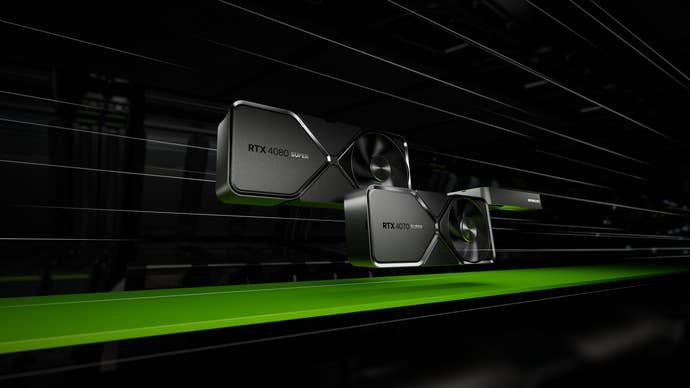
PC graphics have been in a strange spot for a couple of years now, the market still reeling from the impact of all that blockchain nonsense. For those of us who want to use our GPUs for gaming, as god intended, it’s frustrating - but it does feel like the market is slowly winding back to a sense of normality.
After a fairly greedily-priced introduction to its RTX 40 series of GPUs, Nvidia looks to be re-tuning things with its mid-generation ‘SUPER’ refresh. They’ve discontinued some cards, replaced with similarly-priced replacements that are significantly more powerful. A few other card brackets have received very welcome price drops. All in all, Nvidia will launch three new RTX 40 GPUs over the next month.
AMD, meanwhile, is opening 2024 with the RX 7600 XT - an entry-level card that at $330 aims to undercut Nvidia’s efforts in similar price brackets. That price puts it in between Nvidia’s 4060 and its 4060 Ti, making for an interesting battle in that price bracket.
As always with GPUs, nothing really matters until the rubber meets the road and we can test and see real-life hardware performance numbers. We’ll be back with those at some point in the future - but for now, it’s already an interesting start to the year.
The MSI Claw is the latest challenger in the handheld gaming PC race
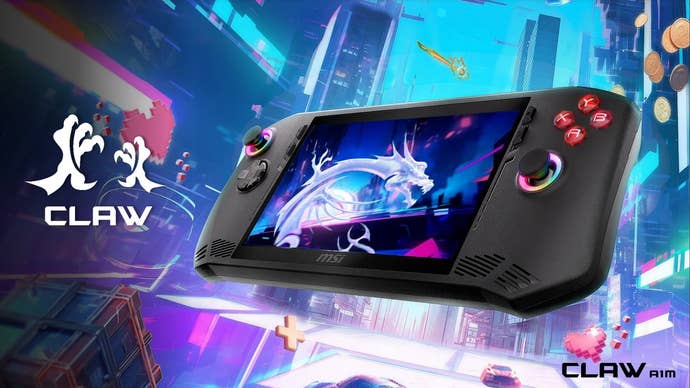
Handheld gaming PCs have of course been around forever, but the true starting pistol on this form factor as a true ‘category’ of viable mainstream hardware was fired by Valve with the Steam Deck. Now, other PC hardware companies are catching up.
Asus of course entered the market quite quickly with the ROG Ally, but this year’s CES saw MSI enter the fray with the MSI Claw - a new device in a familiar form factor that has the words ‘TRUE GAMING’ etched into the upper portion of its frame, just in case anyone is left wondering what the device is for.
The Claw will come in three different models ranging from $700 to $800, and is powered by Intel’s new generation of ‘Meteor Lake’ mobile processors. It’s got a seven-inch 120Hz IPS display that outputs at 1080p, 16GB of RAM, and most of the features you’d hope for like a 3.5mm headphone port and a MicroSD slot, plus some you might not be all that fussed about such as a power button with an integrated fingerprint scanner. That MicroSD port might be more useful to some models over others, as storage on the Claw starts at 512GB, but goes up to 1TB on the top end.
In terms of form factor, it’s pretty similar to the Steam Deck, though it’s heavier. It justifies that by having what MSI says is the largest battery of any device of this kind. The machine is powered by Windows 11. It’ll be interesting to see how this holds up in testing, and how it overall compares to the Steam Deck OLED - but regardless, it’s good to see this exciting segment of the market continuing to expand.
Retro handheld saddos ride again with Hyperkin’s Mega 95
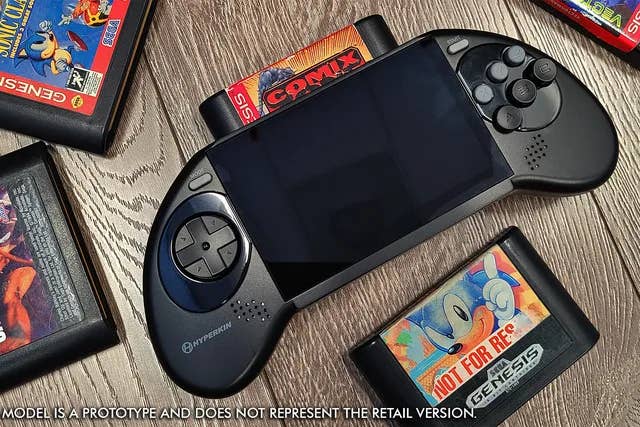
If spending hundreds of dollars on a gaming PC in your pocket isn’t your cup of tea, how about carrying around a little slice of the nineties? Plus some original carts.
The Mega 95 is basically a gaming handheld that takes the form of a six-button Sega Mega Drive/Genesis controller with a screen whacked in the middle. As a bonus, it takes original carts. In practice, it most closely resembles the Sega Nomad, a handheld Mega Drive that Sega itself put out in the nineties, back when it was releasing about eighteen different bits of confusing hardware every year.
The Mega 95’s extra party trick is that you can also pick up a dock that allows it to be plugged into your TV. The dock contains two ports which can be used to plug in original controllers or modern reproductions. That’s nice, though there are a number of existing modern Mega Drive alternatives, including one from Hyperkin.
The handheld element’s point sort of eludes me, to be honest. It’s a cool-looking device, and referencing the Nomad is a great nineties deep cut… but in 2024, are you really going to take this on holiday and lug a bunch of carts with you? For some reason, the screen on the device is 16:9, and has a switch to let you play games in either 4:3 or a stretched 16:9… despite the fact that the Mega Drive has no 16:9 games.
Hyperkin wasn’t revealing any more about this product at CES beyond its existence - no word on how it runs the games, a price, or even a release window. But based on Hyperkin’s other products, you can expect hardware emulation that’ll probably be decent, but not as 1:1 accurate to real machines as on a higher-end, higher-priced product like those from Analogue. It’ll also undoubtedly be more premium and pricey than the cheap and cheerful Super Pocket, mind.
As for the price, Hyperkin already has a portable SNES very similar to this, and it runs for around $120 - though Hyperkin will announce more on this specific handheld in due course.
LG’s transparent OLED TV feels like it’s from the future
Honestly, this one absolutely has to be seen to be believed - thus the video embed from the guys at CNET. It’s wild. In this, LG delivers a television that looks pretty normal in its basic mode - but with a press of a button it transforms, taking away the backdrop so that you can quite literally see through the TV to the wall or whatever else is behind.
This technology has shown up in mega-bucks concepts before, but LG’s roll-out here is the first time this sort of technology has been in a consumer-facing product for a (still eye-wateringly expensive) consumer-facing price.
It has hologram vibes. It feels a bit like AR. Instantly, I imagine a phone with this technology and it gives me palpitations (though that is obviously presently impossible). It reminds me a lot of stuff like Minority Report or Total Recall. But it’s real, it works, and I honestly think it looks rather stunning - though it might not be what you’d want for gaming. But as a piece of technology - wow, it’s cool.
The best game streaming service is getting a little bit better

Make no mistake, GeForce Now is hands-down the best product out there if you want to stream your games over the internet from afar without having to run them locally on high-end hardware. The machines it runs on are great, you get generally great versions of games, and it’s even directly compatible with other store fronts and services, so if you own something on Steam or have a PC Game Pass subscription, you can play those titles through GeForce Now, so long as they’re compatible.
At CES, GeForce Now got a customary update that promised more game compatibility, including some Activision Blizzard titles that’ll surely eventually be hitting Game Pass. But the real news came in the form of the reveal of ‘Day Pass’ subscriptions - an offering that lets you use GeForce Now streaming for a single day in exchange for a flat fee.
As it currently stands, due to high demand the only way you can subscribe to GFN is to stump up for a 6-month subscription - so this is good for those who don’t want to do that. But also, these new day passes are a great way to try out the service, or for those of us who have powerful PCs in our homes to use the service when we’re away from home without paying as if we’re using it daily. It’s a smart play, and GFN remains the best option in this particular market.
Alienware’s newest OLED PC Gaming Monitors are ridiculously desirable
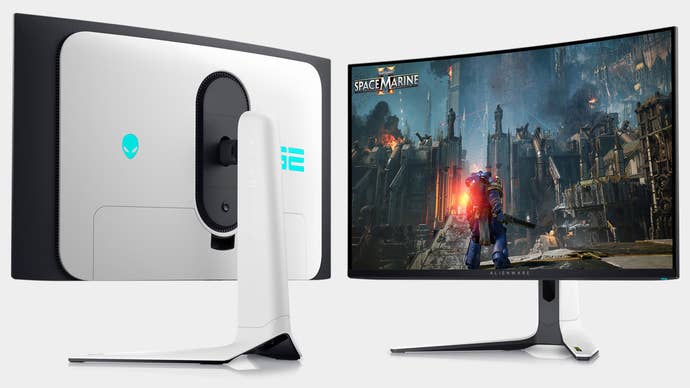
Alienware was the first company out of the gate with a truly good OLED gaming monitor for PCs with its first generation of the QD-OLED range. At CES 2024, the company revealed that it’s following that up with two new models - and both look excellent.
With the likes of Asus nipping at their heels in the PC OLED space, Alienware is firing back with a 32-inch and 27-inch model, both using stunning Samsung panels.
The 32-inch monitor has Nvidia Gsync technology, up to 4K resolution, a 240Hz refresh rate, Dolby Vision HDR, and a sweet curve. It’s an eye-watering $1200, but that actually isn’t so bad for this class of monitor.
The 27-inch monitor tops out at 1440p, and is flat - but it can go to 360Hz. It swaps out GSync for the cheaper-to-license AMD Freesync; the monitor is $900.
Honda’s newest car can be driven with a PS5 controller, for some reason
Dumb gimmicks are a tentpole feature of CES, and one of the best this year happened when Sony drove a car on stage at its yearly press conference… driven by an exec holding a PlayStation 5 DualSense controller.
The car in question is a new corporate tie-up between Sony and Honda, the new Afeela EV that aims to combine Honda’s automotive chops with Sony’s skill with cutting-edge technology. The car uses Unreal Engine for its in-car graphics (no, really). There was also a hint that the team behind the Afeela has been working with Gran Turismo developer Polyphony Digital, so presumably you’ll be able to drive the car in-game in short order.
You’ll likely never be able to drive a car from outside it with a game controller, at least not in any country with remotely sensible road traffic laws. But on a serious note, game controller compatibility is rather useful in cars, especially in EVs. The ability to sync an Xbox controller to a Tesla and play Vampire Survivors while parked can seriously take the tedious edge off charging or waiting around - so to see that being embraced more and more is a good thing.
G-Sync Pulsar could be a game changer
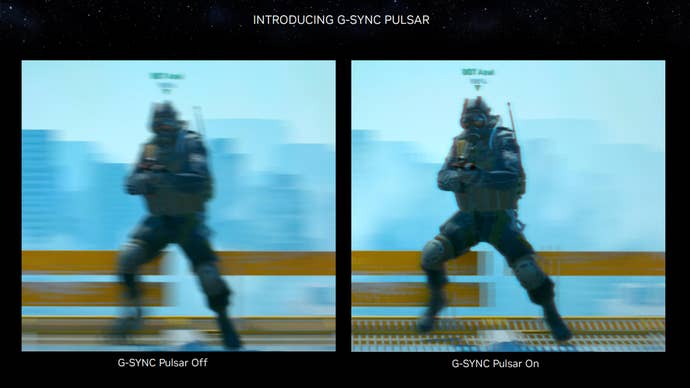
Graphics powerhouse Nvidia had a lot to talk about at CES, including continuing forays into the world of AI, and so it didn’t place too much of an emphasis on G-Sync Pulsar, a new technology it’s gearing up to debut. But I think it could low-key be one of their most important announcements of the show.
Pulsar basically aims to nip motion blur in the bud - something that’s been a problem, especially on certain types of display, forever. An off-screen photo from Nvidia aimed to showcase what a difference this might make - but also, it’s difficult to really understand technology like this until you see and use it yourself - something I personally experienced with Nvidia Reflex.
But what might the actual difference-maker be? Well, I hand off to John Linneman from our friends over at DigitalFoundry, who can explain it far more succinctly than I. John says:
“Pulsar basically seeks to eliminate persistence motion blur that has continued to plague flat panel displays since the beginning while allowing VRR - a display technology that allows dynamic refresh rate adjustment to eliminate judder. Previously, these were incompatible but pulsar seeks to combine them allowing super crisp motion with variable frame-rates. If this takes off, flat panels could finally offer something that even CRTs couldn't match - variable refresh rates with perfect motion clarity. I can't wait to see it in action.”
Asus launches its first ROG-branded NUC mini-PC
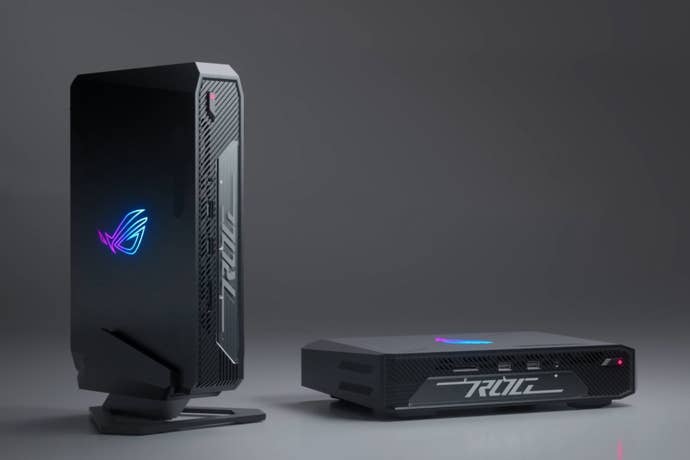
‘Republic of Gamers’ is a bloody silly name for a brand, but Asus’ hardcore gamer imprint has nevertheless become something of a hallmark of quality. I type this staring at a ROG-branded monitor, in fact. And now, ROG is branching into a new market.
Last year, Intel discontinued its NUC (aka ‘Next Unit of Compute’) mini PCs - but Asus pretty quickly stepped up and announced that it’d continue the NUC footprint under license with Intel. NUCs are compact and powerful, but they aren’t always designed for gaming - but now the imprint is under Asus, it’s perhaps not a surprise to see the company debut a gaming-focused variant under the ROG banner.
That product is the Asus ROG NUC 14, and it’s dinky - just 270x180x50mm. This form factor is a little console-like in that it can be laid flat or placed in an upright position with a stand.
In spec terms, the ROG NUC 14 supports a small range of Intel processors, up to 32GB of RAM, four M.2 SSD storage slots, and for graphics you’ll have the choice between an Nvidia GeForce 4060 or 4070, in the version that usually ships in laptops. It’s got six USB ports, a Thunderbolt port, HDMI and DisplayPort outputs, audio jacks, and an Ethernet Port.
The key information about the machine - such as the price, release date, and information on how hot it’ll run when pushing games, remains unknown. But it’s an exciting initial announcement, for sure.
Smart Grills sound silly, and they are, but I still want one

I know this is a gaming website, but let me digress with a small detour: I love smoking meats. Maybe this is part of my ‘dad era’, or whatever, or just a horrible consequence of crossing into my mid-thirties. But I love nothing more now than lavishing attention on a slow-cooked meat, indirectly smoked on a barbeque with a silly price.
Because I’m also a gadget nerd, however, I like to let my interest in tech and BBQ meet - and I already have a couple of silly gadgets so I can do things like get a ping on my phone if the heat is too much or whatever else.
On one hand, this stuff is tremendously silly. Man has been cooking over fire forever, and we can do it just fine without a load of gadgets. And yet… It's convenient. And cool. So, y’know, I’m still into it.
The BBQ kings at Weber have made a few of those products, and have been in the smart game for a while. But at CES, they were showing off the Weber Summit FS38X, their latest outdoor smart grill. This thing has it all. It is the pimp-my-ride of barbeques. There’s a touchscreen, a sensor array to ensure the correct temperature and an even cook inside, and even an infrared broiler you can raise or lower to get the exact finish you want. It can even be transformed into a rotisserie. It’s bonkers.
Just typing about it has me salivating (or maybe that’s just the fact I’ve not eaten dinner). The only catch? Well - for a start, it’ll run you five grand. Maybe I’ll stick to my regular old Weber for now after all…
These mysterious ‘Handy’ VR add-ons
Honestly, lads. Just stop it. Get some help.
There’s now a Razer Gamer RGB car
This one probably has the same target audience as the Handy VR gadget listed above, to be honest. This wasn’t technically a CES announcement, but it did make a first appearance on the show floor after being revealed in a YouTube video about a month ago.
Basically, Razer and Lexus partnered on a new vehicle - a gamer-focused version of the Lexus TX concept car. The car has lovely, garish RGB lights everywhere, including the underlights that in the UK in the mid-noughties I distinctly remember being christened ‘wanker lights’.
To be fair to the car, it’d be pretty good for a gamer road trip. It’s got monitors, can accommodate four gaming laptops, and has its own Xbox. Sadly, it isn’t road legal - which is probably for the best.
